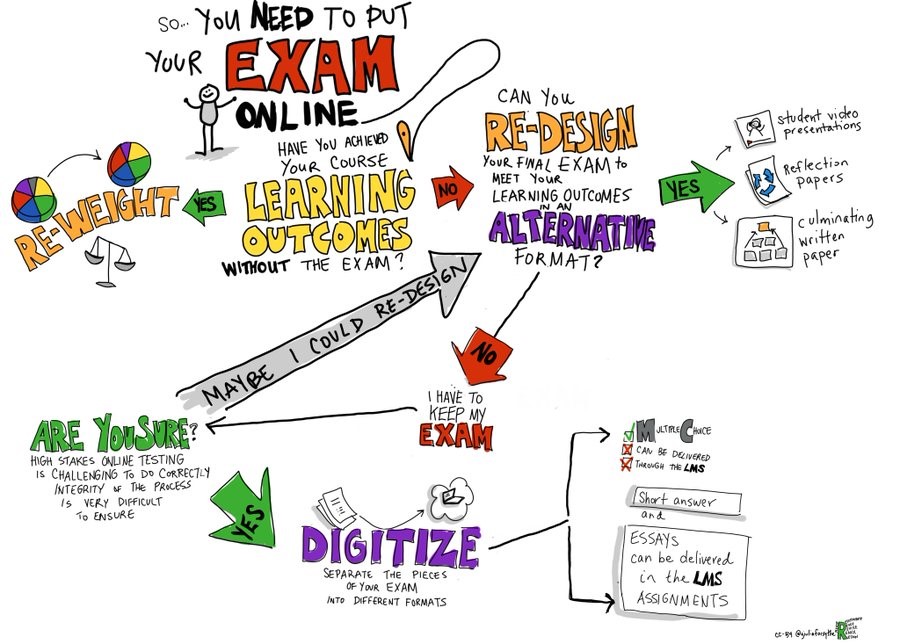
By Susan Smith
Associate Dean (Education and Students)
The spread of the Covid-19 virus across the globe and the imminent move to online delivery of teaching and learning is presenting us with the additional challenge of moving our assessments online at short notice.
This is something that we had not anticipated or designed into our course and module delivery and which requires careful consideration. In addition, we must be mindful that changes to the anticipated assessment modes are likely to increase student anxiety particularly where students are unfamiliar with the format or rubric against which they will be marked. We must be clear and consistent in our module level communications regarding any changes to the assessments.
Some modes of assessment, which typically require a physical presence, have a more obvious adaptation to online assessment e.g. presentations, whilst others can require more creativity to meet the learning outcomes e.g. unseen exams.
What are the considerations?
- Meeting the learning outcomes of the module, albeit in a different way.
- Whether a switch on an accredited course or module carrying professional exemptions will be accepted by the professional body (positive confirmation should be sought prior to communicating proposed changes).
- The alternative assessment should require an equivalent amount of effort from the student. The School’s assessment equivalences document may help guide this decision.
- Design the assessment to mitigate the risks. Some pros and cons of various assessment modes are highlighted on the Summative Modes of Assessment presentation on the School’s Teaching and Learning web pages.
e.g. a take away paper with a very limited window may replicate near exam conditions but we should be mindful of variations in students’ quality of connection to the internet, time zone differences and accommodating reasonable adjustments. The desire to create time constrained situations to reduce academic integrity concerns should be balanced against redesigning the nature of the tasks to focus on application and extending the time window. This is an already stressful time for our students.
- Moderation of revised assessments.
- Some students may have challenges engaging with online assessment. We will put in place alternative arrangements as required.
Communicating changes
Communication to students should be clear and transparent regarding the:
- Assessment mode e.g. you will now be assessed by a report rather than an unseen exam.
- Rubric or marking scheme that you intend to use.
Please ensure that alternative assessments are approved, and set up by the CAO team prior to communicating to students. All assessments must be submitted via Turnitin or Canvas and not directly to faculty emails. In the event that an electronic submission point cannot be created, submission will be arranged via a dedicated CAO email box.
Best practice
Offer students the opportunity to practice the assessment mode if they have not come across it previously so that they understand what is required and how you will apply the rubric or marking guide.
Show them exemplars of what you’re looking for, preferably at different levels of achievement.
Resources
The Business School teaching and learning web pages feature information on the various modes of assessment along with an assessment equivalence guide as well as other information around assessment and feedback.
A useful document to help evaluate the various alternatives to in-person assessment by Sally Brown and Kay Sambell is available as a download from Sally’s website.
Ideas around writing effective take-home exams.
If you wish to share useful resources or top tips, this Padlet holds a collection of resources sourced by Business School faculty.


Leave a Reply